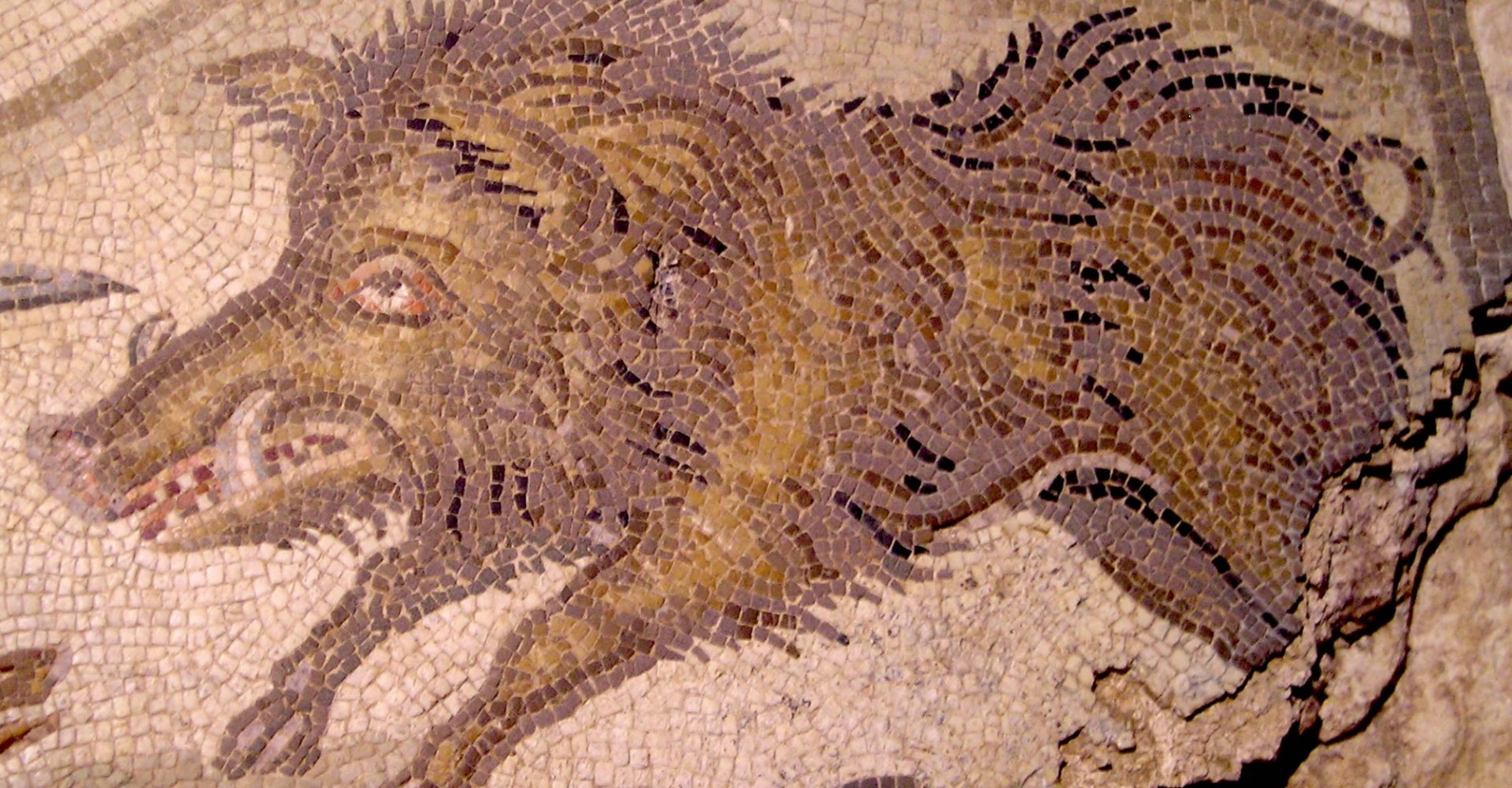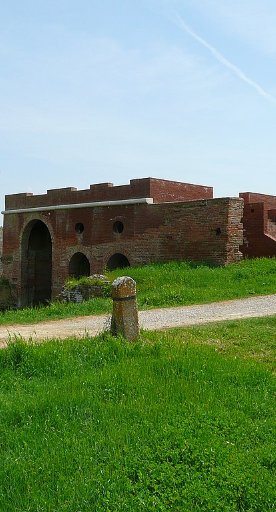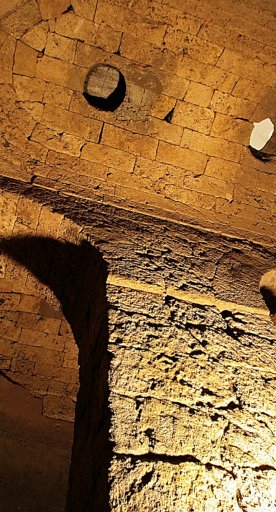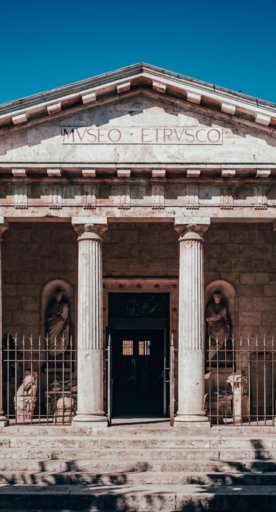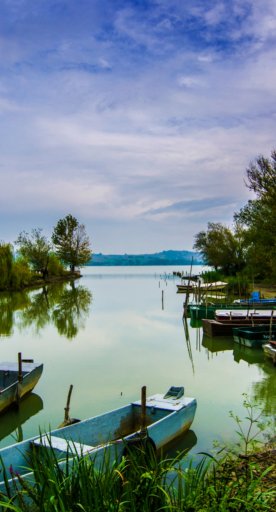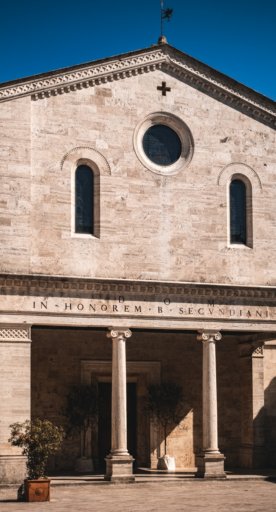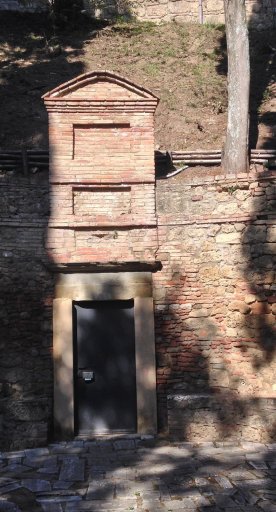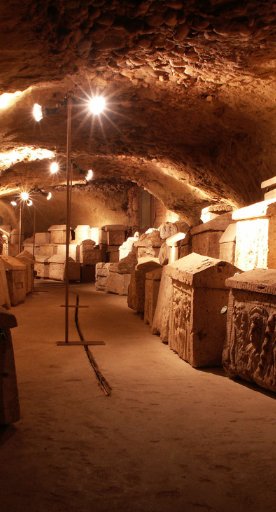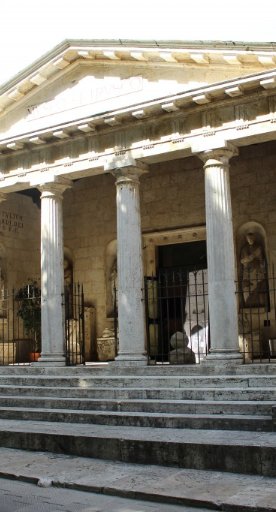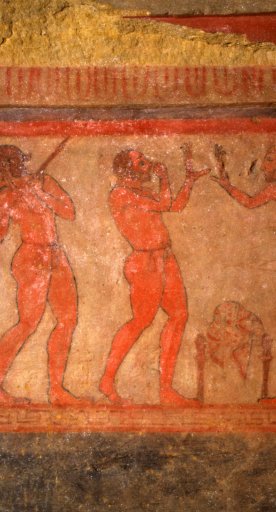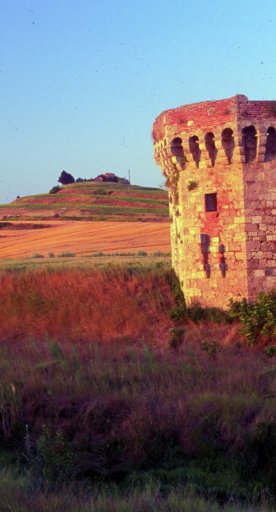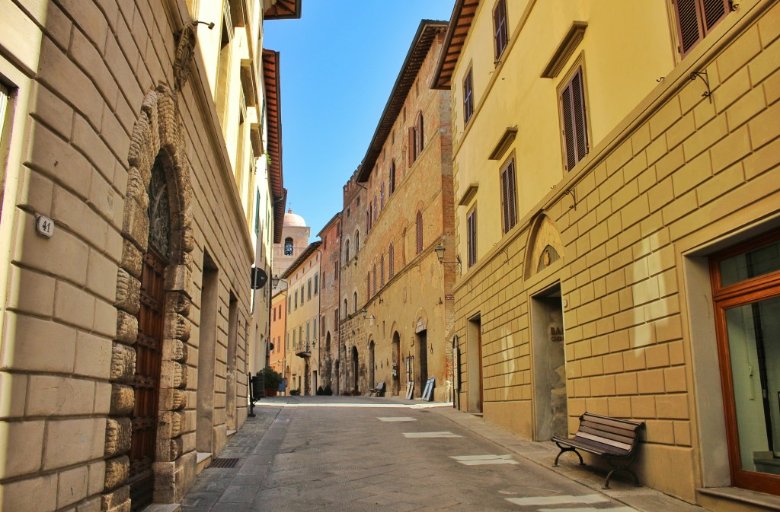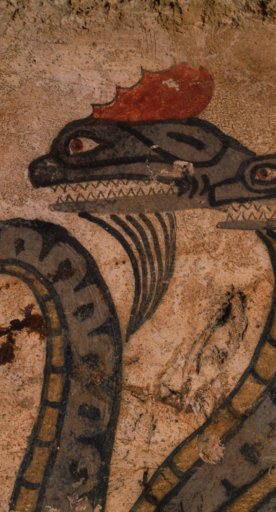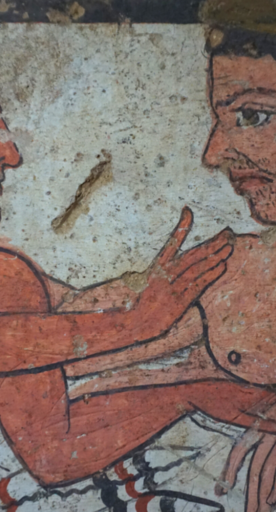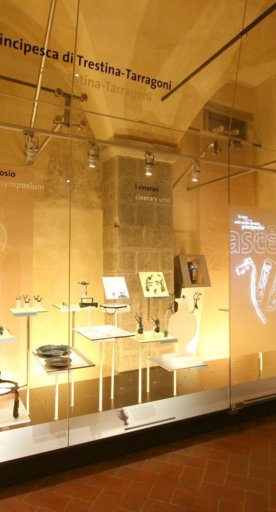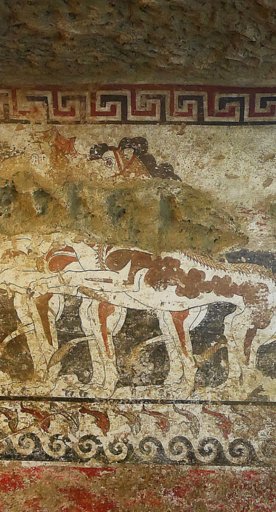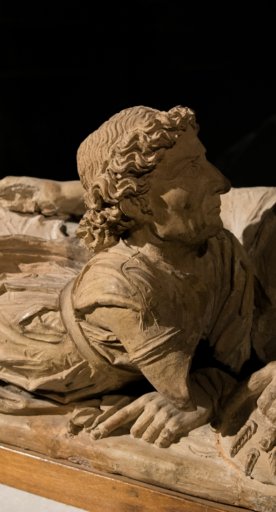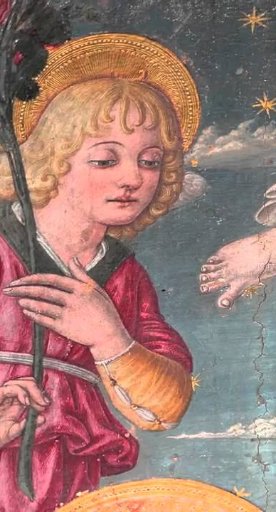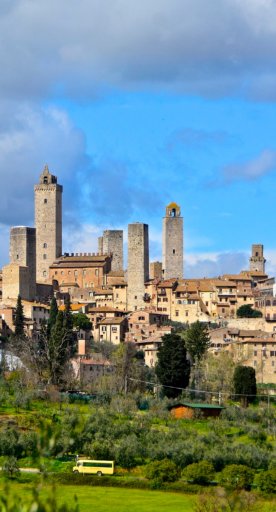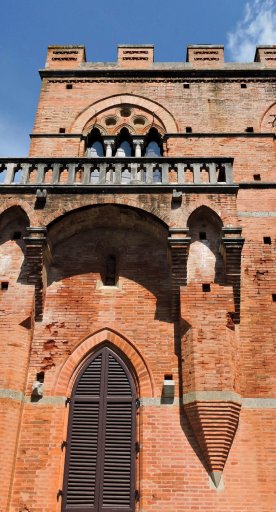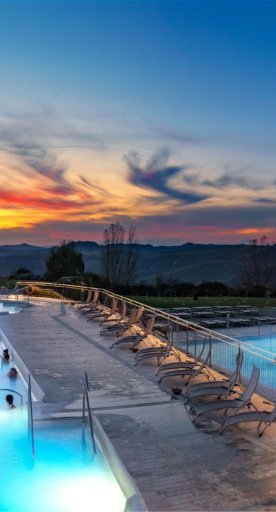Chiusi
A glorious Etruscan history surrounded by a quiet Tuscan countryside
Bordering Umbria, in the Valdichiana countryside, sits the historic city of Chiusi, the proud receiver of the Touring Club’s Orange Flag.
According to Roman sources, it’s considered to be one of the very first and most important Etruscan cities. The historian Servius stated that it was founded by either the hero Clusius, son of Tyrrhenus and prince of Lydia – who, according to Herodotus, led the migration that established the Etruscan community – or by Telemachus, the son of Ulysses.
A bit on Chiusi’s history
During the Etruscan era, Chiusi became one of the main cities in the whole Etruscan city network; in the 6th century BC, the town began to form its first contacts with Rome. It was at this time, towards the end of the 6th century BC, that the Etruscan King Porsenna laid siege to Rome and probably conquered it. Chiusi’s wealth was particularly tied to its immensely fertile alluvial soil and the city’s strategic position along an important commercial route. Heading up the Tiber river through the Chiana valley, which was navigable at the time, the route led right to the Valdarno.
After having been seized by the Goths in 540 AD, Chiusi became home to a Lombard Duchy, known to have existed until 776. From the 11th century onwards, the city’s power remained firmly in the hands of its bishop; by the following century, however, it had to submit first to the rule of Orvieto, then that of Siena. In this period, the commune of Chiusi was established, though it was later annexed by the Republic of Siena.
During the Etruscan era, Chiusi became one of the main cities in the whole Etruscan city network; in the 6th century BC, the town began to form its first contacts with Rome. It was at this time, towards the end of the 6th century BC, that the Etruscan King Porsenna laid siege to Rome and probably conquered it. Chiusi’s wealth was particularly tied to its immensely fertile alluvial soil and the city’s strategic position along an important commercial route. Heading up the Tiber river through the Chiana valley, which was navigable at the time, the route led right to the Valdarno.
After having been seized by the Goths in 540 AD, Chiusi became home to a Lombard Duchy, known to have existed until 776. From the 11th century onwards, the city’s power remained firmly in the hands of its bishop; by the following century, however, it had to submit first to the rule of Orvieto, then that of Siena. In this period, the commune of Chiusi was established, though it was later annexed by the Republic of Siena.
What to see in Chiusi
Once in Chiusi, it’s well worth visiting the historic centre, the piazza del Duomo and its deeply historic, evocative Co-Cathedral of San Secondiano, whose interior recalls the most beautiful Early-Christian basilicas in Rome.
Chiusi’s Civic Museum is another unmissable monument, divided into three different locations in the historic centre. The visit starts from the Palazzo delle Logge, where the Labyrinth of Porsenna section is found. Accessed from the Cathedral Museum, the exhibition documents the legend of the Etruscan King Porsenna, whose mausoleum is said to be kept right at the heart of the labyrinth directly under Chiusi. In truth, the labyrinth that unfolds underneath the nearby piazza and streets adjacent to the Duomo isn’t the tomb of the Etruscan king as tradition says, but is an ancient aqueduct (also from the Etruscan era). Continuing towards Via Porsenna, the city’s historic decumanus, visitors will come across several noble palaces including Palazzo Baldetti, Palazzo Della Ciaia, characterized by its tower with Gothic arches, Palazzo Nardi and Palazzo Turrini-Betti, from the 1500s. Now all that’s left to see in the city center is the Archaeological Museum where relics from excavations of archaeological areas are collected.
Once in Chiusi, it’s well worth visiting the historic centre, the piazza del Duomo and its deeply historic, evocative Co-Cathedral of San Secondiano, whose interior recalls the most beautiful Early-Christian basilicas in Rome.
Chiusi’s Civic Museum is another unmissable monument, divided into three different locations in the historic centre. The visit starts from the Palazzo delle Logge, where the Labyrinth of Porsenna section is found. Accessed from the Cathedral Museum, the exhibition documents the legend of the Etruscan King Porsenna, whose mausoleum is said to be kept right at the heart of the labyrinth directly under Chiusi. In truth, the labyrinth that unfolds underneath the nearby piazza and streets adjacent to the Duomo isn’t the tomb of the Etruscan king as tradition says, but is an ancient aqueduct (also from the Etruscan era). Continuing towards Via Porsenna, the city’s historic decumanus, visitors will come across several noble palaces including Palazzo Baldetti, Palazzo Della Ciaia, characterized by its tower with Gothic arches, Palazzo Nardi and Palazzo Turrini-Betti, from the 1500s. Now all that’s left to see in the city center is the Archaeological Museum where relics from excavations of archaeological areas are collected.
Nearby
The immediate vicinity of Chiusi in the heart of the Valdichiana Senese is filled with places that the Etruscans reserved for their burials, which dot the hills surrounding the current town center. Here, in the farmland and the forests, over the course of the centuries, and especially in the 1800s, more than a thousand tombs have been brought to light.
Not far from the city sits the luminous Lake Chiusi, a glistening mirror of water perfect for walks and experiencing historical and natural beauties.
The immediate vicinity of Chiusi in the heart of the Valdichiana Senese is filled with places that the Etruscans reserved for their burials, which dot the hills surrounding the current town center. Here, in the farmland and the forests, over the course of the centuries, and especially in the 1800s, more than a thousand tombs have been brought to light.
Not far from the city sits the luminous Lake Chiusi, a glistening mirror of water perfect for walks and experiencing historical and natural beauties.
Events
From the last Sunday of August to the first of September the Ruzzi della Conca takes place in Chiusi Scalo (a hamlet in Chiusi) and has done so ever since 1981. Its name is derived from two typical linguistic-dialectal expressions used in Chiusi: Ruzzo, the game created for entertainment and fun, and Conca, the valley in which the town is located. The event is based on the historic ball game “palla al bracciale” ( which literally translates as “bracelet ball”) whose roots are entrenched in Renaissance Italy and which once dominated national audiences before other games were imported, the most important being football.
From the last Sunday of August to the first of September the Ruzzi della Conca takes place in Chiusi Scalo (a hamlet in Chiusi) and has done so ever since 1981. Its name is derived from two typical linguistic-dialectal expressions used in Chiusi: Ruzzo, the game created for entertainment and fun, and Conca, the valley in which the town is located. The event is based on the historic ball game “palla al bracciale” ( which literally translates as “bracelet ball”) whose roots are entrenched in Renaissance Italy and which once dominated national audiences before other games were imported, the most important being football.
Typical products
The brustico (a lake fish) is one of the area’s must-tries and has been cooked since the Etruscan times. Once the fish is grilled, it’s washed and cut into small pieces. It’s traditionally served with local olive oil, lemon and a portion of “fagiolina” of the lake (small white beans grown in the surrounding area).
It’s also from this very region that one of the oldest and most important cow meat comes from. We’re talking about none other than the Chianina breed, born and raised in the Valdichiana. Steak is another of the area’s delicacies, and it’s often found in traditional dishes such as braised stew.
The brustico (a lake fish) is one of the area’s must-tries and has been cooked since the Etruscan times. Once the fish is grilled, it’s washed and cut into small pieces. It’s traditionally served with local olive oil, lemon and a portion of “fagiolina” of the lake (small white beans grown in the surrounding area).
It’s also from this very region that one of the oldest and most important cow meat comes from. We’re talking about none other than the Chianina breed, born and raised in the Valdichiana. Steak is another of the area’s delicacies, and it’s often found in traditional dishes such as braised stew.
